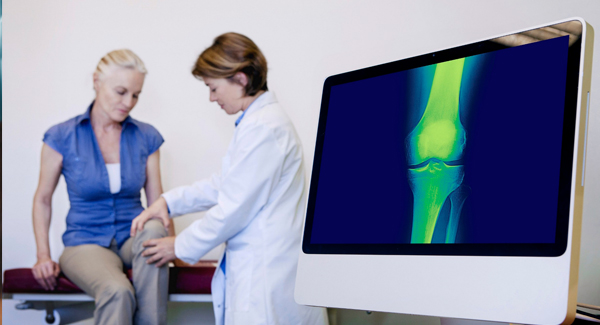Prolotherapy for Osteoarthritis
By EmilyDelzell
Studies show that sugar-water injection therapy offers modest pain relief, but many experts say evidence of effectiveness and safety is still lacking.
Prolotherapy is the injection of an irritant solution (usually a form of sugar called dextrose) into joints, ligaments or tendons. It usually involves three to four or more shots given monthly for several months, followed by occasional, as-needed injections.
In people with osteoarthritis (OA), the 80-year-old therapy is most often used to treat join pain in the knees, fingers and thumbs. Most doctors who treat OA, however, use prolotherapy rarely, if at all.
“I would not recommend prolotherapy because I believe the jury is still out on its efficacy,” says Julius Oni, MD, assistant professor of orthopedic surgery at Johns Hopkins University School of Medicine in Baltimore, Maryland. “Most studies in the treatment of osteoarthritis are relatively small and show some short-term benefit, with no definitive mid-term or long-term benefit.”
How Does it Work?
But that’s not something researchers have been able to prove in the lab. Dr. Oni cautions, “The basic science behind the therapy’s mechanism of action is poorly understood.”
Some experts think the pain relief prolotherapy provides is due to a placebo effect, as injections and needling produce a strong placebo response.
What Studies Show
“Prolotherapy suffers from a lack of well-thought-out, methodologically sound, large randomized trials, particularly with long-term follow-up,” says rheumatologist Amanda Nelson, MD, assistant professor of medicine in the Division of Rheumatology, Allergy, and Immunology at the University of North Carolina at Chapel Hill.
Safe to Try?
Prolotherapy is offered most often offered in sports medicine and orthopedic practices. Dr. Nelson notes the technique isn’t taught in rheumatology training programs or included in professional OA guidelines – including the American Academy of Orthopaedic Surgeons’ treatment guidelines for knee OA – because of this lack of evidence. “It’s not widely accepted by the medical community, and you won’t often find rheumatologists offering prolotherapy,” she says.
Dr. Oni says the only patients for whom he would consider the treatment are those who “are adamant about trying prolotherapy as part of his or her conservative treatment regimen,” he says. In those cases, he says, “I will consider referring such a patient for prolotherapy.”
Cost
Diagnosed With Osteoarthritis?
Get the latest news and tips about living with OA in the Living Your Yes! e-newsletter.


